Barnard Castle
OS grid reference:- NZ 049 164
The historic market town of Barnard Castle, a popular tourist destination, is situated just over the border in Teeside, County Durham. The town derives its name from the castle which it developed around.
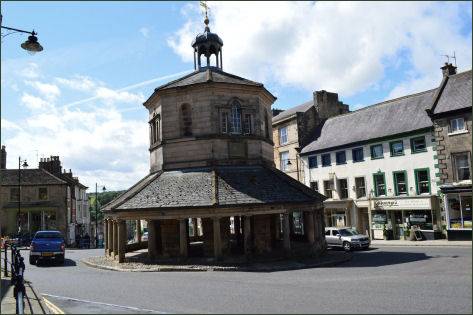
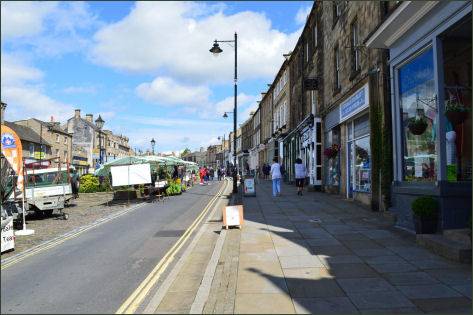
Following the Norman conquest, the surrounding countryside was laid waste by the Normans in retaliation for the murder of the first Norman Bishop of Durham, Bishop Walcher by the Northumbrians, in 1080. A further rebellion in Northumbria in 1095 resulted in King William II 'Rufus' dividing the Earldom of Northumberland into smaller baronies. The area which is now Barnard Castle was granted to Guy de Balliol, who founded Banard Castle. The castle passed down through the Balliol family to the Beauchamps and then, by marriage to Richard Neville, Earl of Warwick and from him to Richard III, who was married to Warwick's younger daughter, Anne Neville.
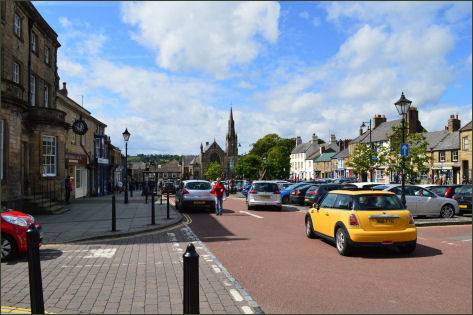
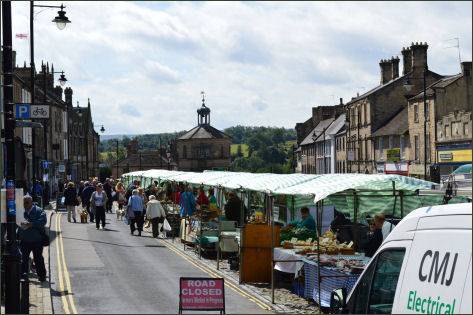
The author Walter Scott frequently visited his friend John Sawrey Morritt at Rokeby Hall. He begins his poem Rokeby (1813) at the round tower of the Barnard Castle. Another famous author, Charles Dickens stayed at the King's Head in Barnard Castle while researching his novel Nicholas Nickleby in the winter of 1837-38. He is reported to have entered William Humphrey's clock-maker's shop and enquired who had made a certain remarkable clock. William replied that it was the work of his boy Humphrey. This appears to have prompted Dickens to choose the title "Master Humphrey's Clock" for his new weekly, in which The Old Curiosity Shop and Barnaby Rudge appeared.
The town centre of Barnard Castle, known locally as 'Barney', has many old cobbled streets and characterful twisting lanes which are lined with buildings from the Georgian and Victorian eras. There are many pubs, clubs, Bed and breakfast establishments, hotels, shops and restaurants. Barnard Castle is an excellent shopping centre and boasts several antique shops, many of the town's shops are thriving independent retailers. There are shops selling home décor, second-hand books, designer clothes, jewellery, accessories, vintage and retro items, local crafts, gifts and much more. The Witham arts centre hosts an events programme of music, theatre, film and comedy.
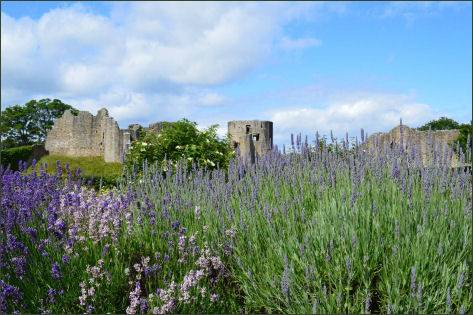
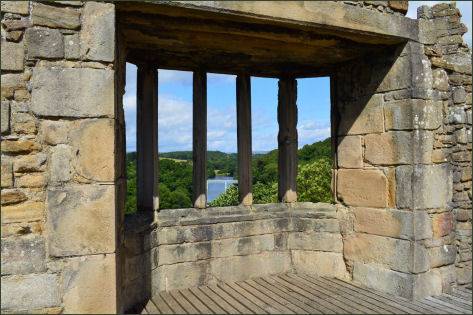
The cobbled Market Place or Buttergate Market is an interesting feature, a weekly market is held each Wednesday and a Farmer's Market on Saturdays. The Butter Market (above right), also known as the Market Cross, an octagonal building, was erected by Thomas Breaks in 1747. The Buttermarket can be found at the end of the main street of Barnard Castle and the upper half was used as a court house in past centuries. Two bullet holes in the weather vane on top of the Market Cross are reputed to have been the result of a shooting competition between a volunteer soldier and a local gamekeeper in 1804.
The Bowes Museum (below right) is housed in a chateau-like building, it was founded by John Bowes and his wife Josephine, and is of national status. It contains an El Greco, paintings by Goya, Canaletto, Boucher, Fragonard and a collection of decorative art. A great attraction is the eighteenth century silver swan automaton, which periodically preens itself, looks round and appears to catch and swallow a fish.
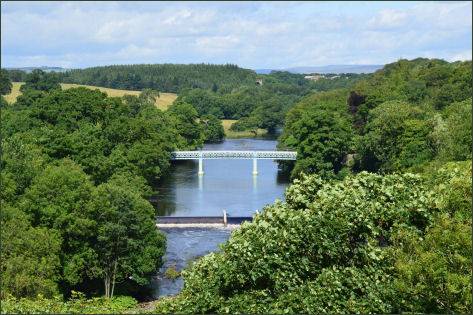
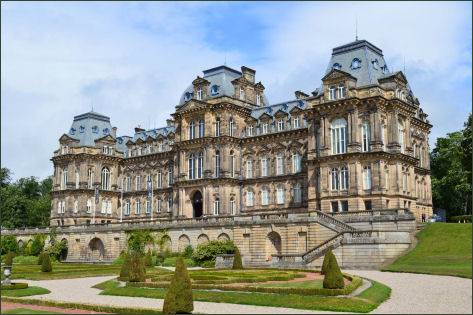
Impressive Barnard Castle perches dramatically on a high rock above the River Tees. The castle was constructed on the site of an earlier defended position from around 1095 to 1125 by Guy de Balliol and enlarged between 1125 and 1185 by Guy's nephew and heir, Bernard de Balliol, his son, also Bernard, further extended the building.
Around 1300 the castle was granted to the Beauchamp family, Earls of Warwick. In the fifteenth century the castle passed to the Neville family by the marriage of Anne Beauchamp to Richarrd Neville, Earl of Warwick, known to history as 'Warwick the Kingmaker'. In 1477 during the Wars of the Roses, Richard, Duke of Gloucester (later to become King Richard III), who was married to Warwick's younger daughter Anne, took possession of the castle, it was to become one of his favourite residences.
The castle is now in the care of English Heritage and is open to the public.
Historic St Mary's Church stands in the centre of the town, opposite to the market cross and has connections with Richard III, the most controversial of English kings. The church was founded in around 1130 by Bernard de Balliol, the second known ruling Balliol of his line, who built the nearby castle, from whom the Castle and surrounding town derive their name.
Nearby Egglestone Abbey is the ruins of a small monastery of Premonstratensian 'white canons', picturesquely set above a bend in the River Tees
Eggleston Hall Gardens is known as the 'Secret Garden of the North', Eggleston Hall is a classical Georgian country house, the gardens cover 4.5 acres of winding paths, complete with a stream and a sixteenth Century churchyard wih a ruined chapel. There have been Gardens at Eggleston Hall since the late sixteenth century. Malcolm Hockham, who runs the gardens, is one of the best known horticulturalists in the North of England.
Blagraves House, which now serves as a restaurant, takes its name from the Blagrave family who lived there in the seventeenth Century. Earlier the house was given by King Richard III to Joan Forest who was married to the Keeper of Kings Wardrobe, Miles Forest. Along with a certain John Dighton he was reputed to have murdered the two young princes in the Tower, Edward V and his brother, Richard, Duke of York. It is said that Oliver Cromwell dined there in 1648.
